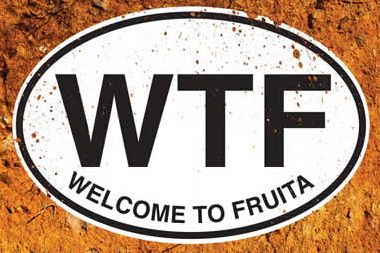
Lucy Walker's Oscar-nominated film The Tsunami and the Cherry Blossom will screen at EFF this year.
While creating public programs at the American Museum of Natural History in New York City for 15 years, Flo Stone learned that movies were a great draw. Film is one of the most effective means to reach people on complex environmental issues, so after moving to Washington, D.C., she applied that knowledge to her green streak and established the Environmental Film Festival in the Nation’s Capital (EFF), which since that time has premiered almost 700 films, including world premieres of important titles like A Sea Change (2009), Carbon Nation (2010), and Planeat (2011). This year it celebrates its 20th event from March 13 to 25, during which 180 films (and 93 premieres) will be shown in 64 venues. Its founder took a minute to answer our questions before the excitement begins.
Q. What’s the role of film in turning the tide on the environmental challenges we face?

Flo Stone, the Environmental Film Festival's founder.
A.In the first years of the EFF, people often asked: Why environmental films? To attract large audiences, some suggested that we drop the word environment, but for me, the environment is all-encompassing and central to our life and future. I also felt its infinite diversity could be reflected in films of all kinds: documentaries, animation, narrative features, experimental films, and a range of films especially for children. Film tells stories in so many different ways. Great films focus attention, and you can learn endlessly through the eyes of talented filmmakers. We need quality films, as we face major environmental challenges, to give us greater understanding and unforgettable experiences. Never underestimate the power of film at its most compelling and artistic.
Q. What has surprised you about the films you’ve screened over the years?
A. Film is a subjective medium and I’m often amazed by the range of responses. What is shown may offend one person and not faze another. Once, a staff member on a written evaluation described a film as the best that year, whereas a loyal volunteer wrote that it was impossible to understand how such a boring, confused look at pollution had been allowed in the lineup! And we have been challenged by people not wanting us to screen certain films: Gasland, The World According to Monsanto, and The Price of Sugar come to mind. We have always shown what we have scheduled, though.
Q. Are all the films that appear at the festival documentaries?
A. The majority are, but we also show narrative features, animated films, archival films, and experimental films. The festival office, along with all of our partners — museums, embassies, universities, theaters, environmental organizations, community centers, and schools — annually search for quality films. We want to hear different voices and have the films that are presented (increase) attendance and participation at the screening events.
Q. Food is an increasing theme. What’s exciting from that category this year?
A. Our pre-festival screening for middle and high school students is Cafeteria Man, about a chef who became a food-service director trying to “green” lunches for Baltimore’s 83,000 students. To Make A Farm is about the trials of people turning to farming as a way of life; a Japanese film, Eatrip, explores the contemporary Japanese food culture; Greenhorns profiles young farmers in the U.S.; The Harvest: The Story of the Children Who Feed America is about young migrant workers; Taste the Waste, a German film about the fact that in Europe and the U.S., over half the food goes to the dump between the farm and the store; In Organic We Trust investigates the organic food brand; and Symphony of the Soil is a comprehensive exploration of soil worldwide, directed by Deborah Koons Garcia, who made The Future of Food.
Q. How has your idea spread?
A. I may have founded the first “environmental film festival,” but over the past 20 years, I am thrilled to say that (such) festivals have developed at an ever-increasing rate across the U.S. and around the world. Each has its own character and mission, but all have growing audiences. We hear almost weekly from ones that are starting up or expanding, and we’ve always welcomed opportunities to serve as a resource. Of course, the web has given a tremendous boost to exchanging information, learning about other programs, and new films. In 1993, the exciting new form of communication was the fax!
Q. Who comes to the festival?
A. In 1993, 1,200 attended. Last year our audience rose to over 30,000. We’re a major community event and most of our programs are free. This year our screenings will be at 64 locations in every part of Washington, D.C., and we have about 110 partners. We want to engage as many people as the theaters and auditoriums will seat. A pre-festival event will bring 1,800 middle and high school students to the Warner Theatre. We want the events to hold the attention of very different audiences, stimulating curiosity and the urge to learn more, and hope to engender an appreciation of the craft of film, the passion of dedicated filmmakers, and the importance and implications of environmental issues. A good film presentation is time well spent, and hopefully provides lasting inspiration to be vigilant and to learn more.
Q. Who’ve been some favorite special guests?
A. There have been so many favorite guests for me at the festival over the past 19 years that I don’t know where to begin or where to stop. It has been wonderful to have E. O. Wilson and David Suzuki three of four times, and David Attenborough as well. We have had retrospectives of Terrence Malick’s films with him in attendance, as well as retrospectives of the work of George Butler, Les Blank, Carroll Ballard, and this year Lucy Walker. Also, Alison Argo explaining frogs to hundreds of young children at the Martin Luther King Library, David Conover describing his dedication to films on coastal issues, as well as the late Mike de Gruys explaining his extraordinary underwater work. Equally unforgettable was seeing the late Nobel Prize winner, Wangari Maathai, experience Taking Root, a portrait of her life, for the first time; hearing Peter Matthiessen speak passionately about wildlife in the Arctic, and having Pete Doctor, a director at Pixar, explain his work process. There are hundreds and hundreds of filmmakers who have given so much to audiences at EFF presentations. I want to list them all!
Q. What are you looking forward to during the 20th festival this month?
A. The whole experience, but especially seeing Last Call at the Oasis, Participant Media’s new film about the global water crisis, and to welcoming Alex Prud’homme, whose book, The Ripple Effect: The Fate of Fresh Water in the Twenty-First Century, inspired the film. I will present some of my favorite animated films from past festivals, including two Oscar winners from Canada: The Man Who Planted Trees and Old Man and the Sea. It will be a joy to honor Lucy Walker with a retrospective of her work, including Waste Land, Countdown to Zero, and her newest, Oscar-nominated work, The Tsunami and the Cherry Blossom.
To have the Goldman Environmental Prize winner Hilton Kelley come to the Howard University screening of Shelter In Place, about civil rights and pollution in Port Arthur, Texas, is important. And to see on the big screen A Fierce Green Fire: The Battle for a Living Planet, the festival’s final offering, with the filmmaker Mark Kitchell on hand.
But there is so much more, with 180 films, 93 premieres, and work from 42 countries. Having 77 filmmakers in attendance as well as 115 special guests speaking is thrilling. We hope the 20th anniversary festival will draw the largest attendance ever both to the screenings and to the information on our website as well!
See all the information on screenings, guests, and events here.




